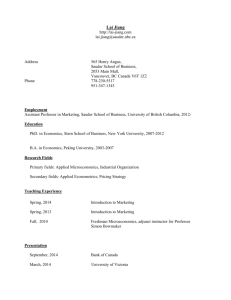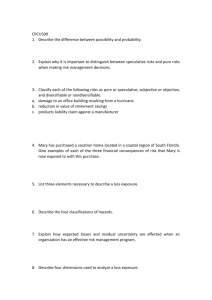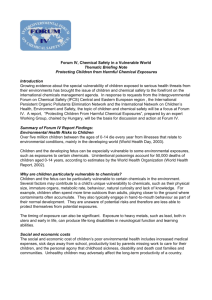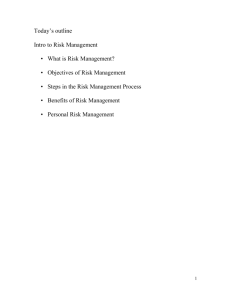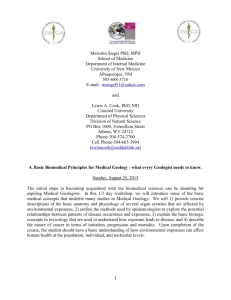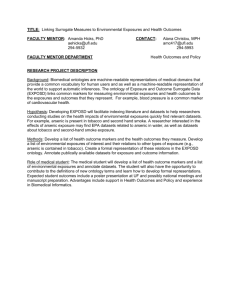PDF of a CPCU 551 assignment excerpt
advertisement
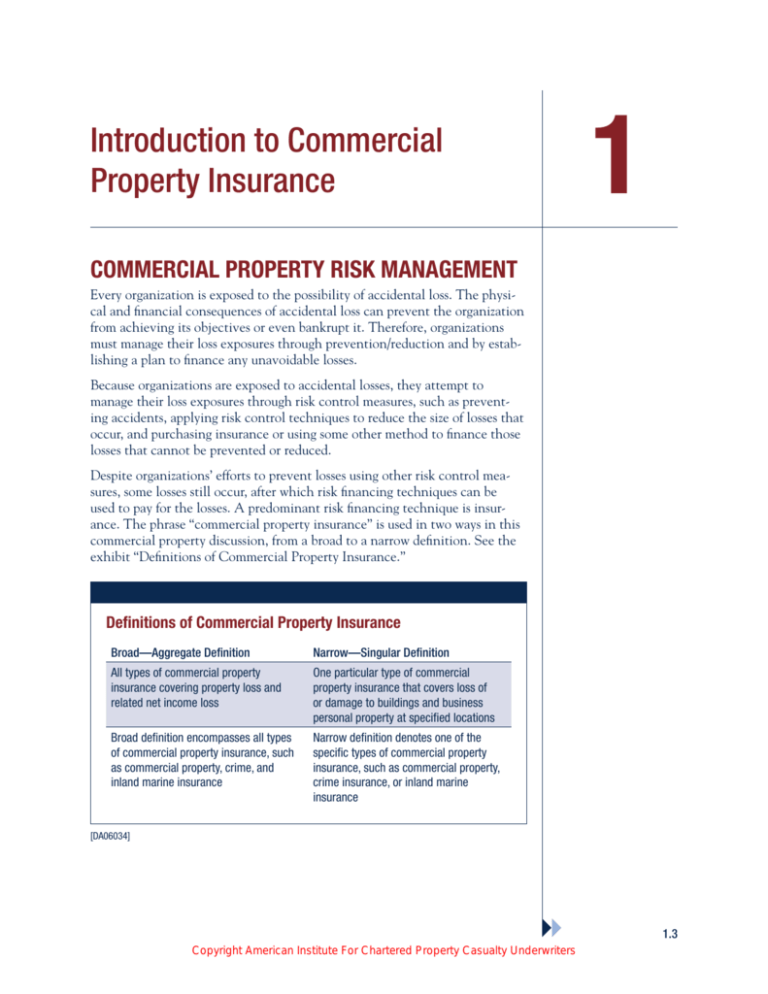
Introduction to Commercial Property Insurance 1 Commercial Property Risk Management Every organization is exposed to the possibility of accidental loss. The physical and financial consequences of accidental loss can prevent the organization from achieving its objectives or even bankrupt it. Therefore, organizations must manage their loss exposures through prevention/reduction and by establishing a plan to finance any unavoidable losses. Because organizations are exposed to accidental losses, they attempt to manage their loss exposures through risk control measures, such as preventing accidents, applying risk control techniques to reduce the size of losses that occur, and purchasing insurance or using some other method to finance those losses that cannot be prevented or reduced. Despite organizations’ efforts to prevent losses using other risk control measures, some losses still occur, after which risk financing techniques can be used to pay for the losses. A predominant risk financing technique is insurance. The phrase “commercial property insurance” is used in two ways in this commercial property discussion, from a broad to a narrow definition. See the exhibit “Definitions of Commercial Property Insurance.” Definitions of Commercial Property Insurance Broad—Aggregate Definition Narrow—Singular Definition All types of commercial property insurance covering property loss and related net income loss One particular type of commercial property insurance that covers loss of or damage to buildings and business personal property at specified locations Broad definition encompasses all types of commercial property insurance, such as commercial property, crime, and inland marine insurance Narrow definition denotes one of the specific types of commercial property insurance, such as commercial property, crime insurance, or inland marine insurance [DA06034] 1.3 Copyright American Institute For Chartered Property Casualty Underwriters 1.4 Commercial Property Risk Management and Insurance Organizations use a six-step risk management process to prevent or reduce property losses. The Risk Control and Commercial Property Loss Exposures section presents a sampling of common property loss exposures and suggests appropriate loss control measures for each exposure. Risk Management Overview Organizations must effectively manage four categories of loss exposures: property, liability, personnel, and net income loss exposures. Understanding the definitions of these loss exposures helps insurance personnel to properly identify and analyze them. See the exhibit “Loss Exposure Definitions.” Loss Exposure Definitions Property loss exposure: A condition that presents the possibility that a person or an organization will sustain a loss resulting from damage (including destruction, taking, or loss of use) to property in which that person or organization has a financial interest. Liability loss exposure: A condition that presents the possibility that a person or an organization will sustain a loss resulting from a claim made against that person or organization by someone seeking money damages or some other legal remedy. Personnel loss exposure: A condition that presents the possibility of loss caused by a key person’s death, disability, retirement, or resignation that deprives an organization of that person’s special skill or knowledge that the organization cannot readily replace. Net income loss exposure: A condition that presents the possibility of loss caused by a reduction in net income. [DA05225] Copyright American Institute For Chartered Property Casualty Underwriters Introduction to Commercial Property Insurance 1.5 The loss exposures that an organization faces can be handled by applying a six-step risk management process. See the exhibit “Risk Management Process.” Risk Management Process Step 1 Identifying loss exposures Step 6 Monitoring results and revising the risk management program Step 2 Analyzing loss exposures Step 5 Implementing selected risk management techniques Step 3 Examining feasibility of risk management techniques Step 4 Selecting the appropriate risk management techniques [DA05226] 1. Identifying loss exposures—First, the organization must identify its loss exposures within each of the loss exposure categories. For example, property loss exposures could include losses resulting from damage, such as costs to rebuild or repair damaged or destroyed office buildings and to restore computer data; losses resulting from taking, such as potential theft losses that could occur from persons inside and outside the organization; and loss of use costs to relocate the business during rebuilding and to store equipment and supplies until the damaged building and property have been repaired or replaced. 2. Analyzing loss exposures—These exposures should then be analyzed to determine the likelihood of loss and its probable extent. For example, techniques for managing these property exposures might include loss reduction, such as installing a sprinkler system to prevent fire damage and establishing a security system with the local fire department; loss prevention, such as establishing internal security controls to prevent employee theft and installing a security system to avoid robbery; separation, such as Copyright American Institute For Chartered Property Casualty Underwriters

